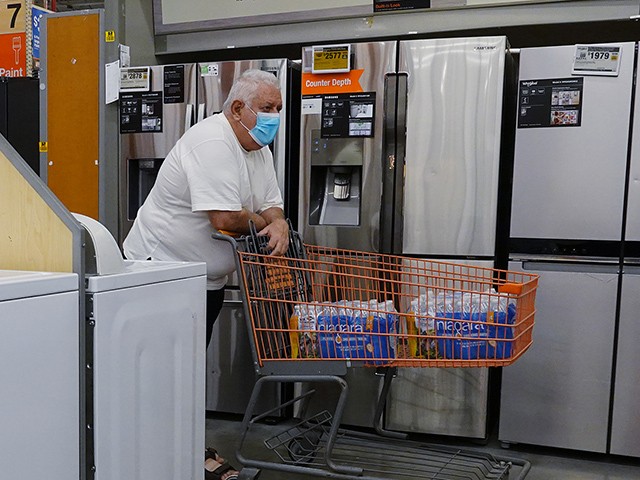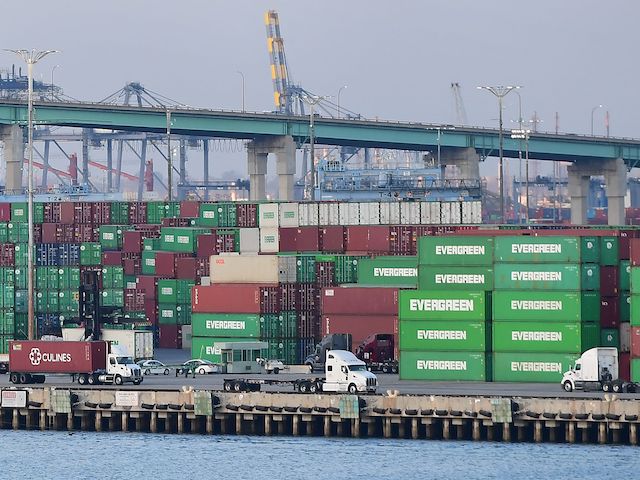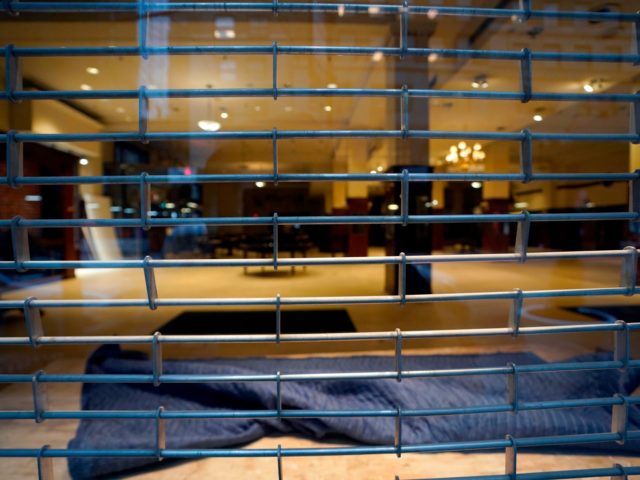Coresight Research Founder and CEO Deborah Weinswig told Yahoo Finance Live on Tuesday the supply chain crisis will continue throughout 2022 and into 2023.
“Let’s look at the math: It’s 14 days to get a container from APAC to the U.S. and 40 days for it to get back,” Weinswig said. “And we have a complete container misalignment right now. So that’s 80 days, we’re talking, in our opinion — we’re probably looking at Q1 2023 before all of those containers get back and realign.”
Shipping containers have been backlogged at ports on the east and west coast for months now. In Port of Savannah, 8,000 shipping containers are stuck in the port – a full 50 percent more than normal. The BBC reported in September there were 65 cargo ships waiting to dock at the Port of Los Angeles. The Los Angeles port is, however, already full of containers, which are waiting for truck drivers to pick up the freight.
Weinswig told Yahoo News even if truck drivers were available to free up container space at the port, there is not must space at warehouses to receive the containers.
“With about a 400% turnover rate in [distribution centers] and warehouses, we’ve got some… real concerns,” she said about the duration of how quickly items are moving through the supply chain.

A customer in the appliance department at a Home Depot store on May 12, 2021 in Pembroke Pines, Florida. Reports indicate that consumer prices surged behind a bottleneck in companies getting supplies for manufacturing. (Photo by Joe Raedle/Getty Images)
According to Logistics Managers’ Index and Cushman & Wakefield, warehouses are also very full and have scarce availability. And if availability is located, prices for the space often come at a premium, the companies told the Financial Times.
“This is not just a holiday challenge — which it is acute, probably the worst I’ve ever seen,” Weinswig said. “I think that this continues. And that is where we’re going to see innovation and new jobs created, but we’re still really short right now.”
Labor is at such a premium that Old Dominion Freight Line will reportedly hire any driver with or without experience. Michael Deneen with Old Dominion told KHQ the pandemic has made hiring truck drivers more difficult due to the unemployment checks that drivers may be receiving from Democrat-controlled states.
“Christmas is going to be, this year is going to be impacted greatly by not just trucking but through the whole logistic network is a little bit out of whack,” Deneen explained. “So buy early, we’re going to work ourselves out of it but it’s going to be a couple of years of going through this new normal right now.”

Containers stacked high are seen at the Port of Los Angeles on September 28, 2021, in Los Angeles, California. (Frederic J. Brown/AFP via Getty Images)
The crisis has also inflated prices for consumers.
A Moody’s economist told the New York Post Friday inflation is costing American workers and families an additional $175 a month. “For households earning the U.S. median annual income of about $70,000, the current inflation rate has forced them to spend another $175 a month on food, fuel and housing,” the New York Post reported Mark Zandi’s findings.
But the price increases are also hurting small businesses. “Small business owners are doing their best to meet the needs of customers, but are unable to hire workers or receive the needed supplies and inventories,” NFIB chief economist Bill Dunkelberg explained. About 35 percent of small business owners reveal supply chain disruptions have made a large, negative impact on their businesses, according to the National Federation of Independent Business optimism index.
Another 32 percent suggest supply chain disruptions have moderately impacted their businesses, and only 21 percent believe they have been impacted mildly. Ten percent of small business owners report no impact at all.
Follow Wendell Husebø on Twitter @WendellHusebø

COMMENTS
Please let us know if you're having issues with commenting.